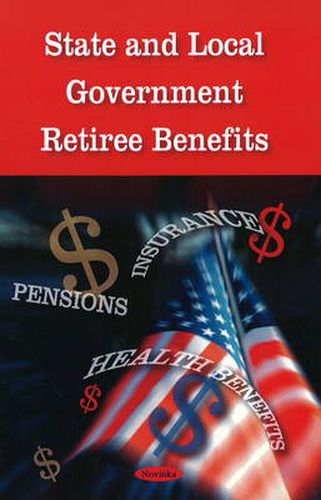Readings Newsletter
Become a Readings Member to make your shopping experience even easier.
Sign in or sign up for free!
You’re not far away from qualifying for FREE standard shipping within Australia
You’ve qualified for FREE standard shipping within Australia
The cart is loading…






Over the past half-century, the number of state and local government workers has grown significantly. In 2006, this sector accounted for about 12 percent of the nation’s workforce. Since 1996, accounting standards calling for state and local governments to report their liabilities for future pension costs have been in place, but standards calling for similar treatment of the future costs of retiree health benefits have only recently been issued. It is unclear as yet, what actions state and local governments may take once the future costs of these benefits are known. However, future decisions about the appropriate levels of benefits for retirees will likely occur in a broader context of persistent fiscal challenges that state and local governments will face in the next decade. Hence, concerns have been raised about the public sector’s capacity to meet the rising cost of providing its retirees with promised pension and other post-employment benefits, such as retiree health care. State and local retiree benefits are not subject, for the most part, to federal laws governing private sector retiree benefits. Nevertheless, there is a federal interest in ensuring that all Americans have a secure retirement, an interest that is reflected in preferential tax treatment for contributions and investment earnings associated with qualified pension plans in both the public and the private sectors. This is an excerpted and indexed edition.
$9.00 standard shipping within Australia
FREE standard shipping within Australia for orders over $100.00
Express & International shipping calculated at checkout
Over the past half-century, the number of state and local government workers has grown significantly. In 2006, this sector accounted for about 12 percent of the nation’s workforce. Since 1996, accounting standards calling for state and local governments to report their liabilities for future pension costs have been in place, but standards calling for similar treatment of the future costs of retiree health benefits have only recently been issued. It is unclear as yet, what actions state and local governments may take once the future costs of these benefits are known. However, future decisions about the appropriate levels of benefits for retirees will likely occur in a broader context of persistent fiscal challenges that state and local governments will face in the next decade. Hence, concerns have been raised about the public sector’s capacity to meet the rising cost of providing its retirees with promised pension and other post-employment benefits, such as retiree health care. State and local retiree benefits are not subject, for the most part, to federal laws governing private sector retiree benefits. Nevertheless, there is a federal interest in ensuring that all Americans have a secure retirement, an interest that is reflected in preferential tax treatment for contributions and investment earnings associated with qualified pension plans in both the public and the private sectors. This is an excerpted and indexed edition.